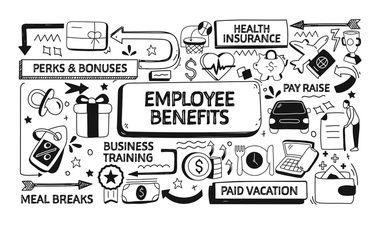How to Address the 7-Year Itch
Things to consider about a Sabbatical

What would you do on the first Monday of your sabbatical?
Be clear about what you expect to achieve. You might want to include a secondary goal, such as starting to write a book or blog or learning a language. Not only will you make personal discoveries, but you will also establish a project to continue working on when you return to your regular life.
Adjusting balance is key to better physical and spiritual health. Your time off can provide you the chance to reduce stress and reassess your life, as well as for realizing aspirations. So how should you set an ideal date and time frame for your adventure?
First, forget traditional notions. Your sabbatical can last a week, a month or a year, as long as you structure it around a beginning, middle and end, plus deadlines. You could even occasionally go into your office to attend to a matter. You might leave a short window of time in case you truly need to delay your plans, but once you set the plan in motion, you must protect it.
If your business or company experiences extra active seasons, you may want to consider scheduling the sabbatical to coincide with a less busy interval. For instance, accountants recognize that client work tends to wind down after April 15. Or, as an entrepreneur running your own business, you will expect typical cycles. Alternatively, your dates might coincide with projects, such as the ideal travel season in locations you want to visit. Moreover, if your plan includes a partner or spouse, you may need to coordinate with them.
Making the case for your me-time
When the moment comes to negotiate with your CEO, manager or business partner, you need a strategy to convince them why and when you are leaving. You might ask for paid leave (although there are advantages to unpaid time too, including less pressure) or you may be looking for confirmation that your job will still be there for you on your return.
Build a case for why leaving may help you become a better employee, whether through increasing your productivity and engagement or addressing your possible burnout and diminishing returns. Although it may be difficult to create a tangible metric, the bottom line usually comes back to the retention of your talent. From the employer’s side, the most compelling argument is competition within an industry, such as technology or consulting, especially if others are awarding free-time benefits.
Some companies offering sabbaticals include:
- PayPal (four weeks every five years).
- Deloitte (three to six months at reduced pay).
- BetterUp (one month after five years).
- Citi (up to 12 weeks of leave, with a portion of base pay and benefits).
- Intel (eight weeks after seven years; four weeks after four years).
- McDonald’s (eight weeks every 10 years).
- Morningstar (six weeks every four years).
Planning your exit strategy
Reentry mode must be managed, too. Maintain any professional licenses and keep in touch with your company. Particularly toward the end of your break, communicate your timeline, reach out to industry contacts, and update your resume and your digital presence. Come back onto the scene gradually. It’s not like turning on a light switch. You might benefit from taking a few final days to reflect on how your experience has changed your life.
Unless your employer is willing to subsidize your time off, you must make careful financial plans, both to cover any loss of income and to pay for extra expenses such as travel. Health care will be a priority; confirm whether you need to purchase your own insurance for the duration of your leave. If you are a parent, you might also require child care or, if you are leaving town, caretaker services for your home’s upkeep.
Add up all those charges and take them to your financial planner to run the numbers in order to calculate both short- and long-term impacts.










